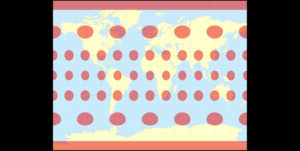#Ideas
Amazing visualization of how Christianity spread around the world
From a sect of Jews to a world dominating religion with over 2 billion followers, the story of Christianity is fascinating. This animated map gives a geographic look at the past 2,000 years and shows how the religion was spread around the world, first by Jesus’s disciples, then by emperors, kings, and missionaries.
It is also interesting to see how all five of the biggest religions in the world: Hinduism, Buddhism, Christianity, Judaism, and Islam spread across our planet.
The video is a part of a larger Business Insider series. You can find all of these videos here.


#Ideas
#Fun
#GeoAI
#GeoDev
#Ideas
#Insights
#News
#Science
Tech for Earth: Key Developments and Breakthroughs from the Past Month
#GeoDev
#Ideas
#Insights
Landscape of UX in Geospatial/EO: Revolutionizing Earth Observation and Remote Sensing
#Contributing Writers
#Ideas
#Insights
#Science
NeRF Explained: Making High-Detail 3D Maps from Simple Photos
















